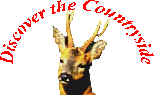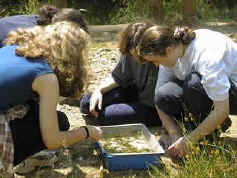Discover The Countryside !

The Fascinating World Around Us -
An Introduction to British Wildlife and Habitats, for
16 - 22 year olds.
LIST OF ACTIVITIES

The list below outlines each of the 10 activities currently on offer. Please note that we are very flexible at the Woodland Education Centre! Each activity is designed to last a full day, but can be scaled down to half a day. In addition, you can mix and match topics from different activities to cover your individual needs. All you need to do is ask. In addition, if you have particular requirements which are not met by any of the activities offered, then contact the Centre and we will be happy to discuss developing an activity to suit your needs. Staff from the Centre can also come to you at your location to lead the activities, provided you have suitable habitats locally. If this is not feasible, the factual content of the activities can also be delivered as a talk, rather than as a practical activity. There is no charge for this service. Contact details for The Woodland Education Centre. Each activity comprises:
List of Activities |
| Activity | Outline | ||
|
Why is this place as it is? In any particular place, there are clues all around us which give us subtle information about the area. All that is required is keen observation and the ability to fit together often disparate pieces of information.
Put all the clues together and suddenly you have a very good understanding and feeling for the area. Test your practical observation skills. Put them together with information from a wide range of subjects such as British history, geography, geology, biology and ecology and learn to interpret the landscape. This activity is not site specific and can be carried out anywhere. |
||
|
Work out the following key
points by comparing three very different, but equally fascinating habitats.
These points will all be looked at in detail, using practical observations to compare a woodland, a wetland and a heathland habitat. There will be many examples of wonderfully adapted organisms to study along the way. |
||
|
This activity will look at different types of woodlands
and at all the many extremely varied habitats within them. Find such unexpected creatures as pseudoscorpions on the woodland floor. Look at the extraordinary diversity of invertebrate life living in rotting wood, or in all the different mosses and lichens clothing tree bark. Search out an amazing variety of fungi of different colours and forms. The activity will cover topics such as:
By the end of the activity, students will have looked at a variety of woodlands in great detail. |
||
|
Wetlands provide an endlessly fascinating background for general
environmental investigation. The following topics will all be covered.
|



